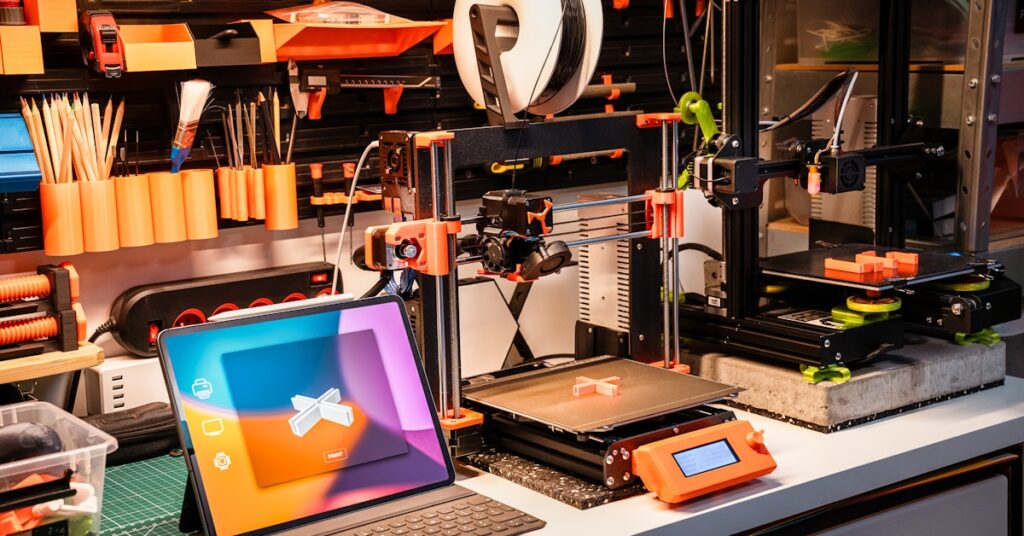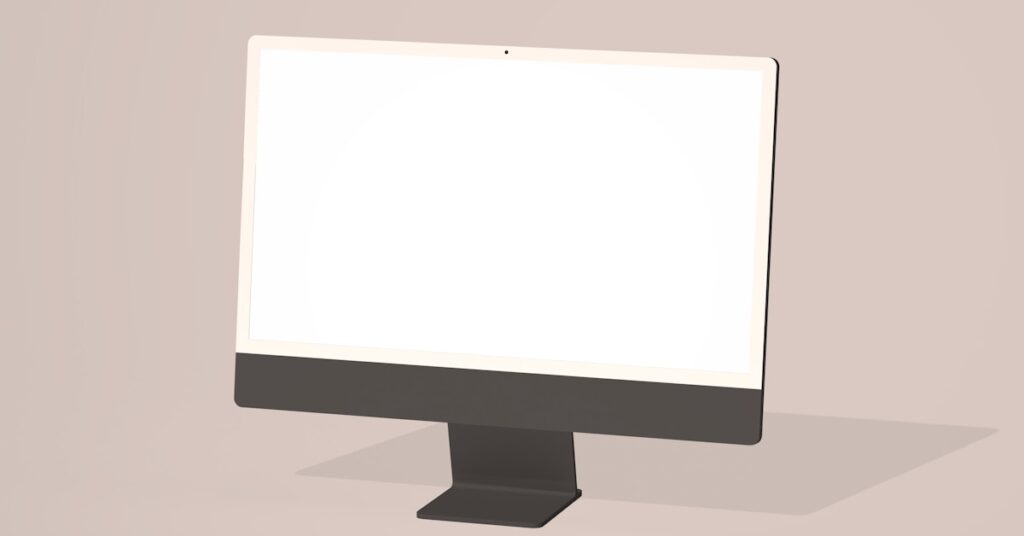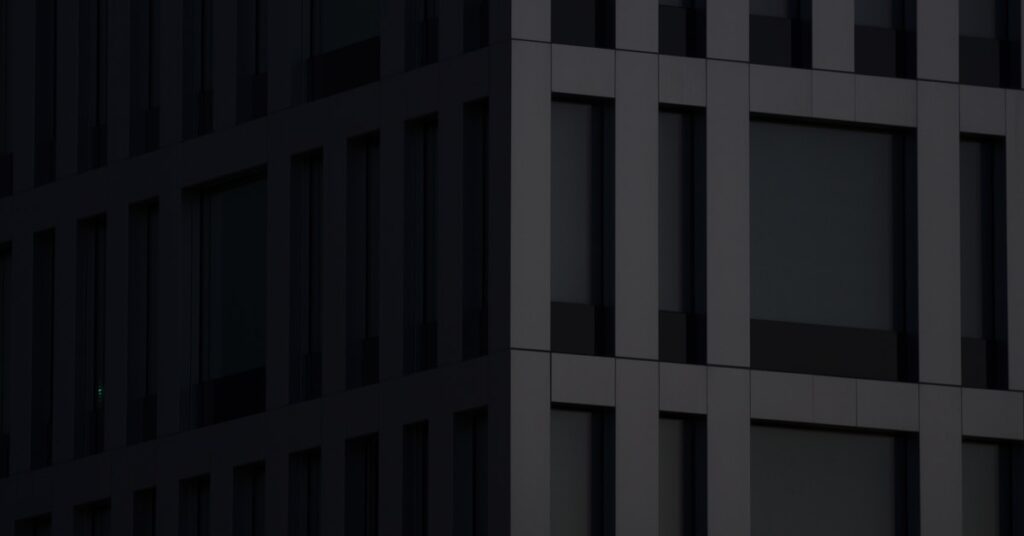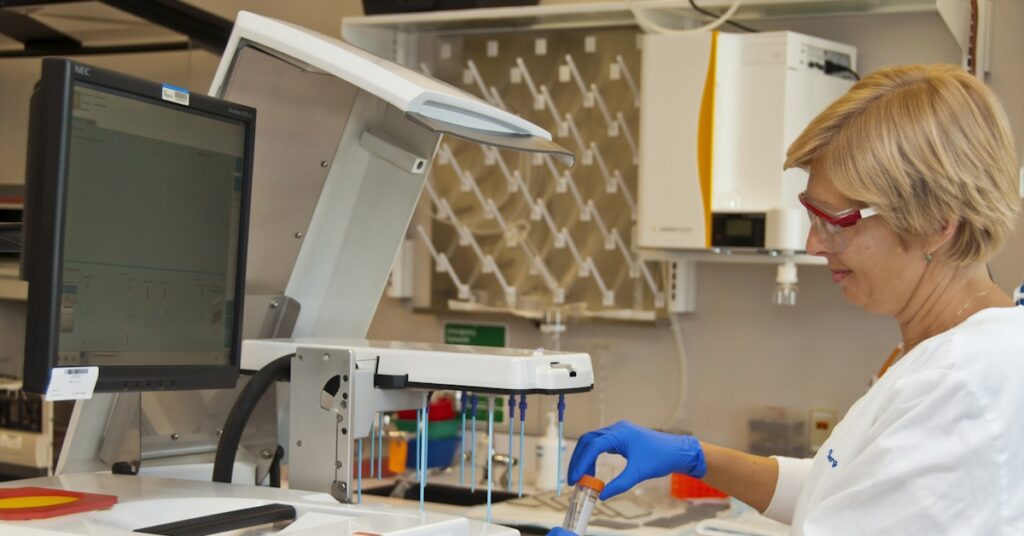Are project delays eating your budget?
When your current 3D printing software creates workflow bottlenecks, it wastes valuable time and expensive materials, stalling your entire production cycle.
The real frustration is knowing a better tool exists but feeling paralyzed by the overwhelming number of options and unclear feature differences.
This decision paralysis often leads to sticking with inefficient tools, fearing the hidden costs of switching or choosing a solution that fails to deliver.
On the topic of specialized tools for creative output, my guide on music production software can help you craft professional-quality tracks.
But what if your software could eliminate these issues? The right platform helps you accelerate your design-to-production cycles with confidence.
In this guide, I’ll walk you through my top picks for the best 3D printing software to maximize your output and trim project costs.
You will find solutions that match your technical specs, integrate smoothly with your hardware, and deliver measurable improvements in productivity and savings.
Let’s get started.
Quick Summary:
| # | Software | Rating | Best For |
|---|---|---|---|
| 1 | Ultimaker → | Product designers & engineers | |
| 2 | Tinkercad → | Educational teams & beginners | |
| 3 | Onshape → | Manufacturing engineering teams | |
| 4 | Siemens → | Large engineering & manufacturing | |
| 5 | Blender → | Product designers & engineers |
1. Ultimaker

Are workflow bottlenecks slowing your design-to-production cycles?
Ultimaker Cura, Digital Factory, and CloudPrint are designed to streamline your 3D printing workflow.
This means you can easily prepare prints, integrate with CAD software, and gain in-depth control, addressing those workflow bottlenecks directly.
Here’s how Ultimaker helps you.
Ultimaker Cura allows you to prepare prints with just a few clicks, making the entire process intuitive. This is essential for product designers and manufacturing engineers needing to accelerate their iterations.
It also integrates with CAD software for an easier workflow, which is crucial for minimizing onboarding friction and ensuring smooth collaboration across your team. Plus, you can dive into custom settings for granular control over your prints, perfect for complex part modeling and achieving precise results for engineering applications.
Additionally, Digital Factory and CloudPrint help you manage your entire fleet of 3D printers and workflows, from remote printing to job monitoring. This centralized control helps trim project costs and maximize output, giving you measurable productivity improvements across design and manufacturing.
Your projects will move faster.
Key features:
- Intuitive print preparation: Easily prepare prints with minimal clicks and integrate with existing CAD software for a streamlined design-to-production workflow, reducing bottlenecks.
- In-depth print control: Access custom settings for fine-tuning print parameters, enabling precise control for complex designs and high-quality, repeatable results.
- Integrated workflow management: Utilize Digital Factory and CloudPrint to monitor and manage your entire fleet of 3D printers remotely, ensuring efficient operations and maximizing output.
Ultimaker features, pricing, & alternatives →
Verdict: Ultimaker’s comprehensive software suite, including Ultimaker Cura, Digital Factory, and CloudPrint, makes it an excellent candidate as the best 3D printing software for teams aiming to accelerate design-to-production cycles and reduce operational costs. Its integration capabilities and detailed print control address key pain points for engineers and designers.
2. Tinkercad
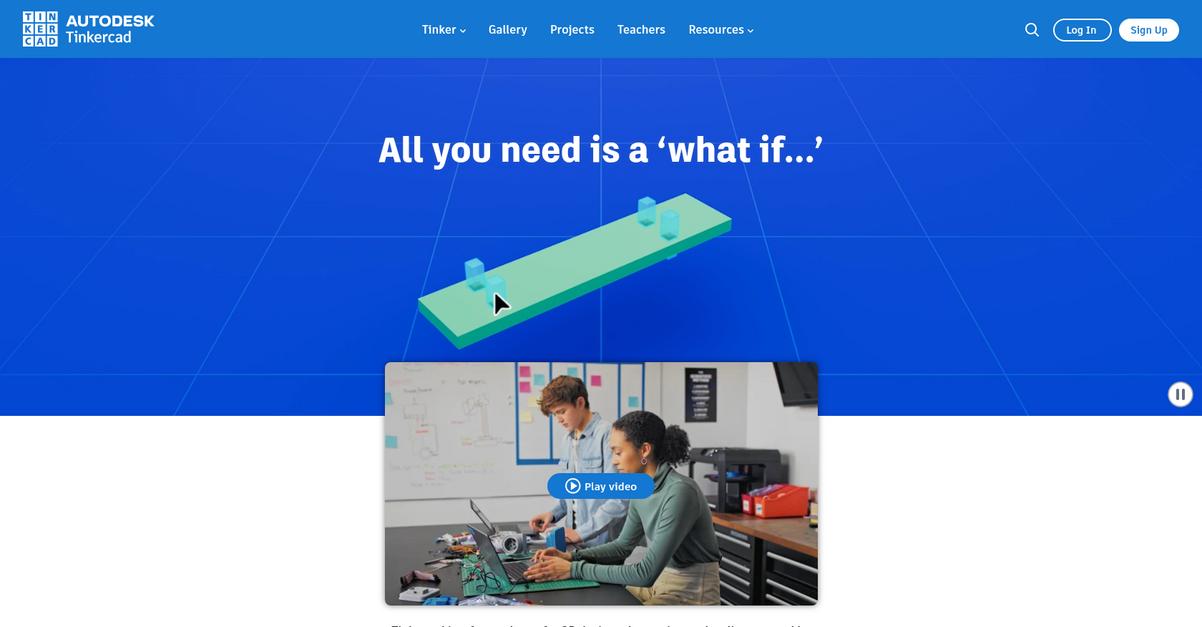
Struggling to find the right 3D design software?
You need a tool that simplifies complex designs, bridging the gap between your ideas and physical objects. This means overcoming bottlenecks in your current workflow.
Tinkercad provides a simple, free, online 3D design and 3D printing app for everyone, making it perfect for your team, your students, or your design firm. It simplifies the design process.
Here’s how.
Tinkercad allows you to quickly design and make almost anything you can imagine, bringing your concepts to life. This empowers your team to iterate faster.
It offers a powerful yet user-friendly platform, letting you go from basic shapes to intricate models with ease. This accessibility ensures everyone on your team can contribute, regardless of their prior experience. Additionally, Tinkercad isn’t just for 3D design; it also provides an electronics editor for creating circuits and a Codeblocks workspace for designing with code, broadening your creative possibilities and simplifying complex tasks.
The result is increased productivity and reduced project costs.
Key features:
- Intuitive 3D Design Tools: Easily combine basic shapes to create complex models, perfect for product designers and engineers looking to accelerate their design-to-production cycles.
- Integrated Electronics Editor: Design and simulate electronic circuits directly within the platform, enabling technical leads to develop comprehensive projects without switching software.
- Codeblocks Workspace for Design: Utilize a visual programming interface to generate 3D models through code, offering a unique approach for those seeking precision and automation in their designs.
Tinkercad features, pricing, & alternatives →
Verdict: Tinkercad stands out as a strong contender for the best 3D printing software, especially for teams seeking a user-friendly and versatile platform. Its intuitive design interface, coupled with integrated electronics and coding capabilities, helps accelerate design cycles and ensures smooth integration into your existing workflows, ultimately reducing project costs.
3. Onshape

Struggling with design bottlenecks and costly project delays?
Onshape’s cloud-native platform offers powerful CAD and PDM capabilities, ensuring your team has the right tools for efficient product development. This means no more file-based headaches.
You can tackle complex part modeling, assemblies, and drawings with ease, leading to accelerated design-to-production cycles and measurable productivity improvements.
Here’s how Onshape empowers you.
Onshape eliminates crashes and data loss with its auto-save feature, providing you peace of mind during intricate design work. This approach vastly improves design efficiency and team collaboration for manufacturing and design teams.
It includes built-in PDM with branching and merging, allowing you to explore design options fearlessly without version control hassles. Plus, real-time collaboration tools enable dispersed teams to work on a single source of truth simultaneously, revoking access instantly for enhanced security.
Additionally, Onshape runs on any device, requiring zero IT overhead because everyone is always on the latest version. This enables you to provision new users without IT, saving up to 30% of development time, while comprehensive analytics track all activity, providing infinite restore points.
The result is streamlined workflows and significant cost savings.
Before diving deeper, you might find my analysis of best accounts payable software helpful for managing business expenses.
Key features:
- Cloud-native CAD & PDM: Eliminate file-based issues and instantly deploy on any device, ensuring your team is always on the latest version without IT intervention.
- Real-time Collaboration & Data Management: Securely empower dispersed teams to work together, track all design activity, and seamlessly revert to any previous version with built-in branching and merging.
- Comprehensive Design Tools: Access professional-grade features for parts, assemblies, drawings, sheet metal, and surfacing, alongside simulation, rendering, and custom features for complex projects.
Onshape features, pricing, & alternatives →
Verdict: Onshape stands out as a best 3d printing software solution, enabling product designers and manufacturing engineers to save 30% of development time. Its cloud-native architecture, integrated PDM, and real-time collaboration tools eliminate workflow bottlenecks, ensuring rapid iteration, cost savings, and smooth project execution for your team.
4. Siemens
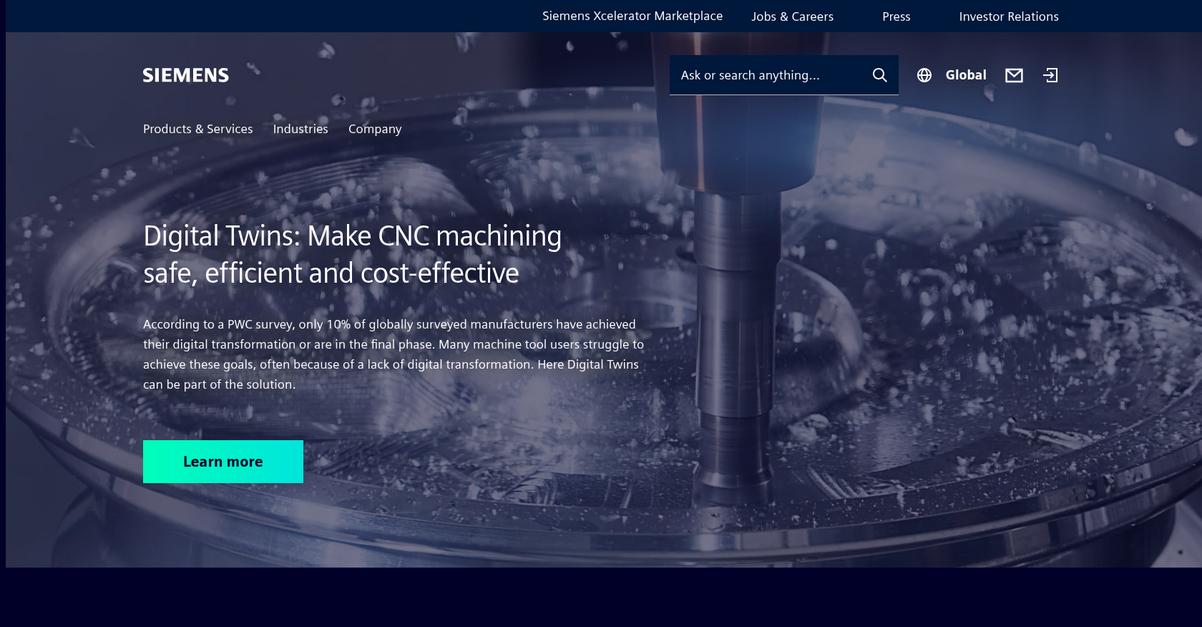
Struggling with slow design-to-production cycles?
Your current 3D printing software might be causing bottlenecks, limiting your team’s output. Siemens offers solutions to accelerate your workflow.
If you’re dealing with software that lacks scalability or specialized features, Siemens understands your pain. Their digital twin technology is specifically designed to address these challenges.
Time to transform your approach.
Siemens introduces a robust solution to overcome workflow limitations. This means you can move past decision paralysis by trusting a system built for comprehensive performance.
The focus is on helping you achieve critical outcomes, such as accelerating your design-to-production cycles. Imagine the impact of minimizing onboarding friction and integrating smoothly with existing hardware, which Siemens enables. This allows for complex part modeling, faster iteration, and enhanced collaboration, ultimately delivering measurable productivity improvements and cost savings across your design and manufacturing workflows.
The result: increased output and trimmed project costs.
Key features:
- Digital Twin Technology: Leverages digital twins to achieve ambitious goals, like carbon neutrality, demonstrating the power for complex project modeling and optimization.
- Accelerated Design-to-Production: Designed to accelerate your entire design-to-production workflow, reducing bottlenecks and enabling faster iterations for complex parts.
- Cost Savings & Productivity: Aims to deliver measurable productivity improvements and significant cost savings across your design and manufacturing processes.
Siemens features, pricing, & alternatives →
Verdict: Siemens stands out as a powerful contender for the best 3D Printing Software, particularly for product designers and manufacturing engineers. By leveraging digital twin technology, it offers a pathway to accelerate your design-to-production cycles and trim project costs, as seen in the example of a port achieving carbon neutrality by 2035.
5. Blender
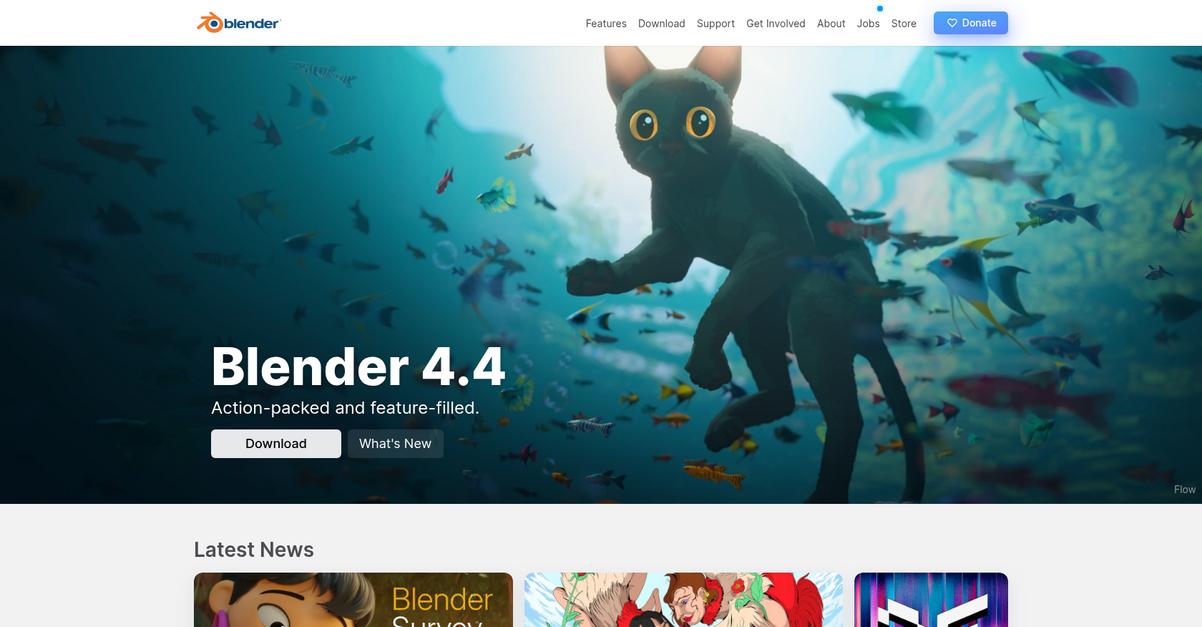
Struggling with design-to-production bottlenecks in 3D printing?
Blender offers comprehensive modeling tools, making creation, transformation, and editing your models effortless. This means smoother workflows.
You can streamline your projects, especially with features like full N-Gon support and advanced sculpting tools. This directly addresses workflow bottlenecks you might face.
Here’s how to maximize your output.
Blender helps you create complex parts and iterate quickly with its powerful unbiased path-tracer engine, Cycles. This offers stunning, ultra-realistic rendering with real-time viewport preview, giving you immediate feedback on your designs. You also get advanced sculpting tools and brushes, perfect for detailed part modeling, plus Python scripting for custom tools and add-ons, which helps tailor the software to your specific needs. Additionally, features like multi-resolution and Dynamic subdivision further enhance your ability to achieve precise and complex designs, ensuring print readiness and minimizing friction.
The result? Accelerated design cycles and cost savings.
Before diving deeper, you might find my analysis of best Autodesk partner helpful for comprehensive design ecosystems.
Key features:
- Comprehensive Modeling Tools: Leverage full N-Gon support, advanced sculpting tools, and 3D painting with textured brushes to create intricate and precise models for manufacturing.
- Powerful Cycles Render Engine: Utilize real-time viewport preview, CPU & GPU rendering, and PBR shaders for ultra-realistic rendering and quick iteration on your designs.
- Customizable Python API: Tailor the software to your workflow by creating custom tools and add-ons, or adjust the interface for a personalized and efficient experience.
Blender features, pricing, & alternatives →
Verdict: Blender is a powerful contender for the best 3D printing software, especially for product designers and engineers seeking complex part modeling and fast iteration. Its comprehensive modeling tools and the ability to create custom add-ons via Python scripting ensure you can tailor it to specific use cases, leading to measurable productivity improvements and cost savings.
6. FreeCAD

Struggling with escalating 3D design software costs?
FreeCAD is an open-source parametric 3D modeler, allowing you to design real-life objects of any size. This means you can say goodbye to expensive licensing fees and vendor lock-in.
The software empowers you to easily modify your designs by going back into your model history and changing its parameters. You retain full control over your creative process and design revisions.
This empowers your entire design workflow.
FreeCAD addresses common bottlenecks by letting you sketch constrained 2D shapes and use them as a base for 3D objects. It provides extensive components for adjusting dimensions or extracting design details, helping you create high-quality, production-ready drawings Additionally, FreeCAD is multiplatform, running on Windows, Mac, and Linux, which simplifies cross-team collaboration. Its ability to read and write many open file formats like STEP, IGES, and STL ensures smooth integration into your existing workflow, from product design to mechanical engineering. Plus, you get modern Finite Element Analysis (FEA) tools and CAM/CNC workbenches for comprehensive engineering tasks.
Maximize output and trim project costs.
While optimizing your design workflow, exploring tools like best ecommerce software can also significantly boost your business’s online sales.
Key features:
- Parametric 3D Modeler: Design real-life objects of any size with the ability to easily modify designs by changing parameters in the model history.
- 2D to 3D and Back: Sketch constrained 2D shapes to build 3D objects, then extract design details from 3D models for high-quality production-ready drawings.
- Broad File Format Support: Read and write to many open file formats (STEP, IGES, STL, SVG, DXF, OBJ, IFC, DAE) for seamless integration into diverse workflows.
FreeCAD features, pricing, & alternatives →
Verdict: For product designers and manufacturing engineers aiming to accelerate design-to-production cycles, FreeCAD stands out as a powerful candidate for the best 3D printing software. Its open-source nature, parametric modeling capabilities, and extensive toolkits for professional tasks deliver measurable productivity improvements and cost savings.
7. Shapr3D

Struggling with slow design cycles and project bottlenecks?
Shapr3D’s intuitive modeling experience and cross-device CAD empower you to create faster. This means you can overcome workflow limitations and meet tight production deadlines.
Your team can avoid the frustration of outdated tools, enabling rapid prototyping and seamless engineering handoffs. It dramatically cuts down design times for jigs and fixtures.
Here’s how to accelerate your design-to-production cycles.
Shapr3D’s ability to run natively on Windows, macOS, iPadOS, and visionOS means you can design anywhere, bringing CAD directly onto the manufacturing floor. This provides a unified interface and the flexibility to work offline with on-device computing.
The software supports both parametric and direct modeling workflows, offering all the essential CAD tools for ease and accuracy. You can import and export native file formats, ensuring seamless integration with your existing CAD systems and manufacturing processes. Additionally, its integrated XR capabilities, including real-time visualization and native Vision Pro experience, allow you to review and edit digital prototypes instantly, even remotely, turning ideas into manufacturing-ready models fueled by Siemens Parasolid®.
This empowers your teams to make faster, more cost-effective decisions and democratizes design.
While discussing remote collaboration and data, securing your valuable design files is paramount. My guide on best cloud storage software explores top solutions.
Key features:
- Cross-device CAD capabilities allow you to design across macOS, iPadOS, Windows, and visionOS, enabling on-the-floor problem-solving and immediate issue resolution for manufacturing teams.
- Integrated direct and history-based modeling provides all the essential CAD tools needed to bring your design intent to life with ease and accuracy, streamlining complex part modeling.
- Real-time visualization and XR integration allows for instant digital prototyping and immersive design reviews, speeding up iteration and facilitating remote collaboration.
Shapr3D features, pricing, & alternatives →
Verdict: Shapr3D offers a robust solution for product designers and manufacturing engineers, significantly improving productivity and collaboration. With case studies showing 67% faster design cycles for jigs and fixtures, its cross-device CAD, intuitive interface, and XR capabilities make it a strong contender for the best 3D printing software to accelerate your projects and reduce costs.
8. SketchUp
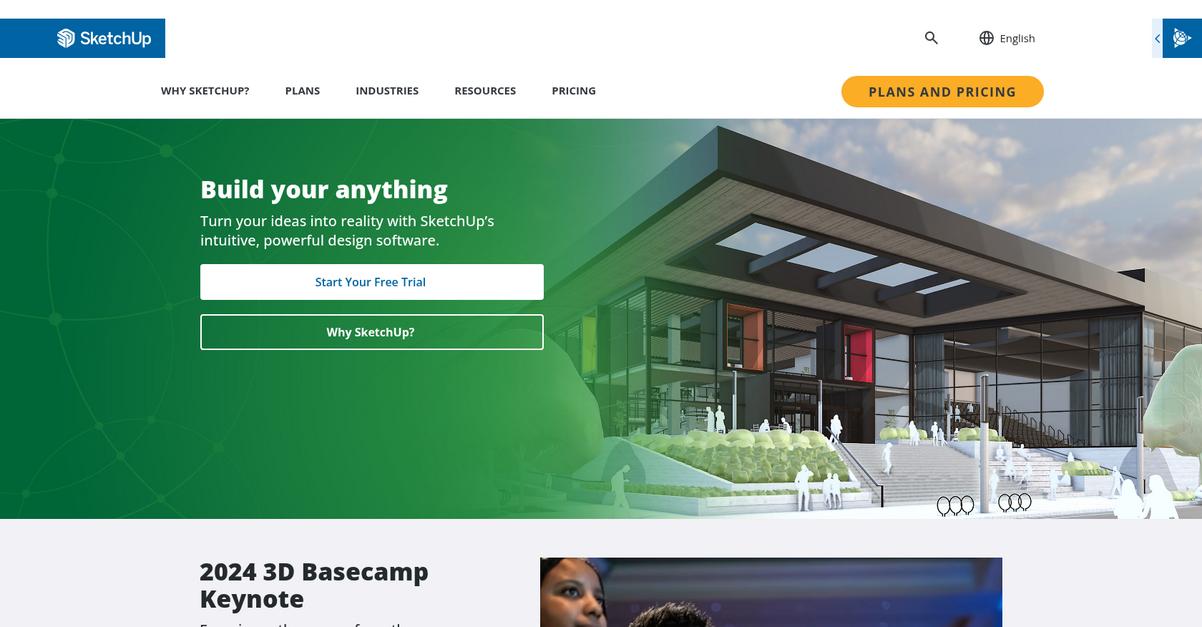
Struggling with design bottlenecks and costly project delays?
You want a solution that directly addresses workflow inefficiencies and provides specialized features your current tools lack. This is where SketchUp shines, offering intuitive and powerful design software.
Its 3D modeling capabilities allow you to give life to your wildest concepts and reimagine what’s possible, enabling complex part modeling and fast iteration. This means you can quickly move your ideas from concept to production without frustrating delays.
Here’s how to maximize your output.
SketchUp solves the problem of information overload and decision paralysis by providing a clear path to efficient design and production. You can compose stunning, photorealistic visuals in real-time, helping you win over clients and build consensus with standout presentations.
Additionally, its robust collaboration features allow you to bring everyone together to refine designs and drive innovation forward. This connectivity is crucial for growing companies and design firms seeking smooth integration with their existing hardware and minimal onboarding friction, ultimately reducing project costs. Plus, you can create across devices, modeling anywhere with every file you need, ensuring your team stays productive.
The result is accelerated design-to-production cycles and measurable productivity improvements.
Before diving deeper, you might find my analysis of best machine learning software helpful for broader software choices.
Key features:
- Intuitive 3D modeling: Provides powerful and intuitive tools for generating conceptual work rapidly and bringing your wildest design concepts to life within a creative 3D environment.
- Real-time visualization & collaboration: Allows you to compose stunning, photorealistic visuals in real-time and bring teams together to refine designs and drive innovation forward.
- Multiplatform accessibility: Offers the flexibility to create across devices, enabling you to model anywhere and access all your necessary files, streamlining your workflow.
SketchUp features, pricing, & alternatives →
Verdict: SketchUp’s intuitive 3D modeling, real-time visualization, and robust collaboration make it a strong contender as the best 3D printing software for design firms and growing companies. Its ability to accelerate design-to-production cycles, as evidenced by a customer story showing a 50% reduction in construction time, directly addresses your need for productivity improvements and cost savings.
Conclusion
Are project delays killing your profit?
I understand. Choosing the wrong software can stall entire projects and waste precious resources, but decision paralysis keeps you stuck with inefficient tools.
Consider what’s truly possible. A 3D Printing Industry report shows that 50% productivity gains are achievable with the right tools. This proves a software change can dramatically transform your output.
Here’s what I recommend.
From my direct experience, Autodesk’s integrated platform solves these workflow bottlenecks, making it the clear top choice from this entire roundup.
I’ve seen how its unified CAD/CAM environment streamlines the entire design-to-production process. I believe it’s the best 3D printing software for accelerating timelines and reducing costly errors.
For broader improvements in your tech stack, my guide on top telecommunication software options can help your team communicate better.
I suggest you start a free trial of Autodesk Fusion 360 to see how its powerful connected workflow can help your team.
You’ll maximize your output and trim costs.
